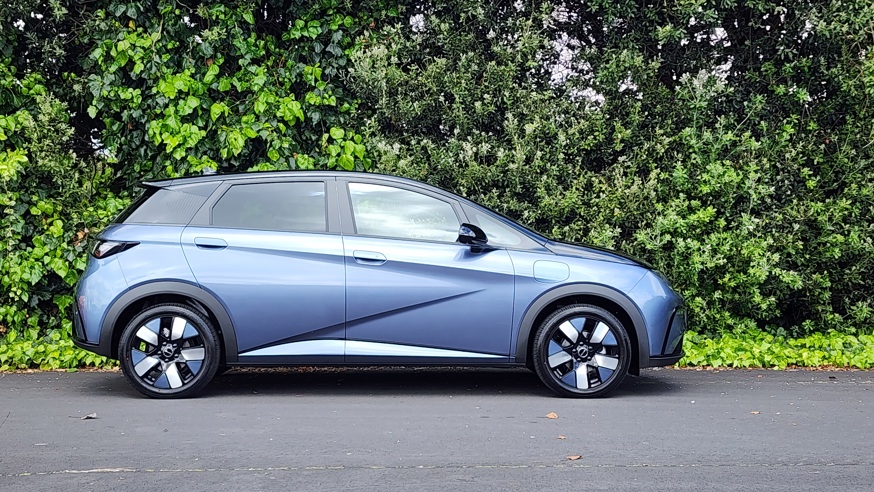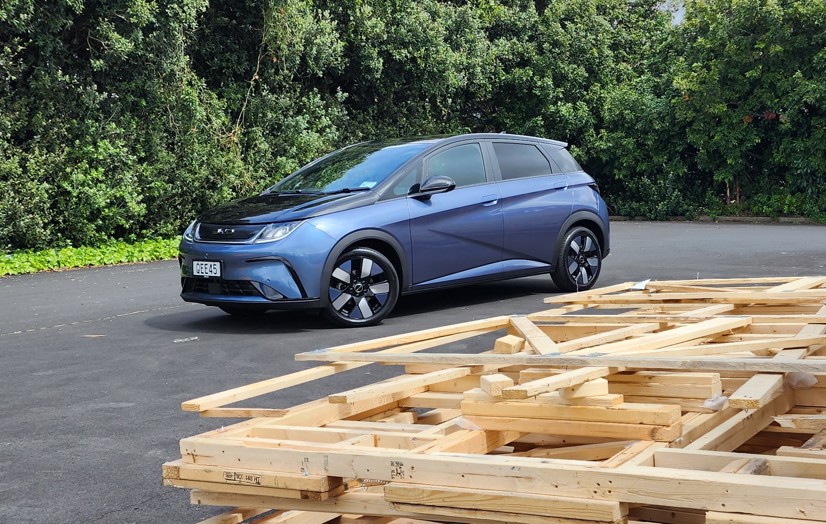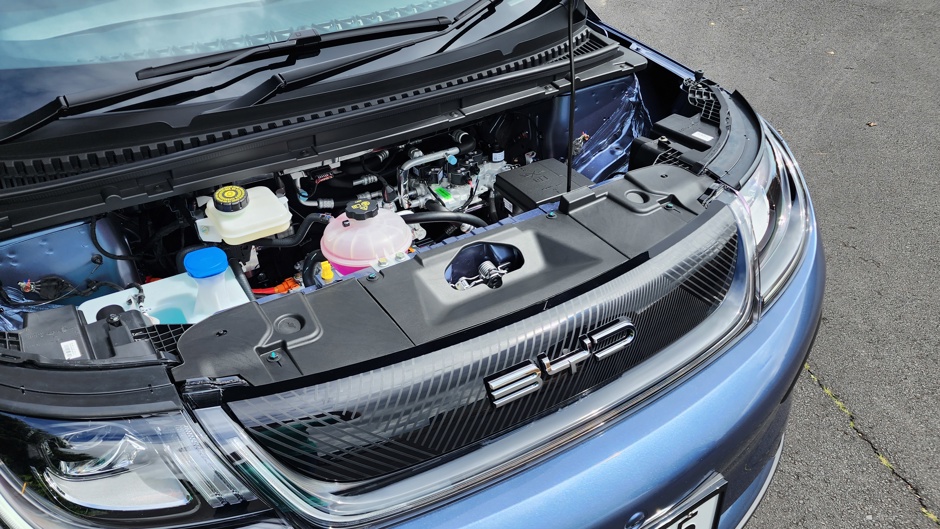BYD’s entry into New Zealand has been an unqualified success, with its first offering, the Atto 3, immediately becoming one of the best-selling EVs in the country.
But you can’t maintain ongoing sales success with just one model (although Ford may well disagree, with the Ranger being the obvious exception to this rule…), so another BYD was always destined to land here in short order. Followed by many more too.
And that second one is here now in the shape of the Dolphin, a small hatch aimed squarely at the likes of the MG4 and GWM Ora. And we got our hands on one, not just for a first drive, but a long term test that will see us living with a Dolphin for three months.
Despite getting to our shores after the Atto 3, the Dolphin is actually the older of the two, launching in its home market back in 2021. Sitting on the same “e-Platform 3.0” underpinnings as the Atto 3 and the smaller Seagull, the Dolphin was launched globally last year, in a revamped, slightly longer form to comply with international crash regulations.

The Dolphin range starts with the standard 45kWh model at $49,990 (before the Clean Car rebate of $7015), but that is basically a fleet-spec model with a 70kW/180Nm electric motor, torsion beam rear suspension and a 340km range.
The model that the vast majority of private buyers will be purchasing is the car that we have here: the $55,990 (likewise, before the CCD rebate) 60kWh extended range that not only gets the bigger battery and a 427km range, but also a far more powerful 150kW/310Nm electric motor and a more sophisticated multi-link rear suspension set up.
The extended range model also gets a snazzy two-tone paint finish and 17-inch alloy wheels with body coloured segments.
Regardless of model, all Dolphins come standard with an impressive level of standard equipment and technology, with the likes of a 360 degree camera system, driver fatigue monitoring, adaptive cruise control, blind spot monitoring, door opening warning, a panoramic sunroof, heated power-adjustable seats, LED lights all around, a wireless phone charger, keyless entry and start with an additional Tesla-like NFC card key, a heat pump and a full suite of driver assists and safety systems.
We got our hands on one, not just for a first drive, but a long term test that will see us living with a Dolphin for three months.
The Dolphin also gets the Atto’s brilliantly gimmicky 12.8-inch rotating touchscreen that moves from landscape to portrait orientation at the touch of a button and no doubt serves some purpose, but is just really fun to do.
While the Atto is larger and technically the newer of the two, the Dolphin actually feels more grown-up and refined, largely due to its more conventional interior and higher level of standard equipment.
While the Atto 3’s “gym themed” interior is somewhat divisive, the Dolphin’s “ocean themed” one is far more low key, with only subtle hints of things like pectoral fins (the interior door handles) and seashells (air vents) scattered around the cabin, that you would only really pick up on if someone told you.
The Dolphin is also blessed with an extremely sensible and logical layout, high quality materials and wonderful ergonomics, making it a superbly comfortable small car.
It’s not quite all excellence, however, as there are still a few things that should be more easily accessible that are buried a bit too deep in menus on the excellent touchscreen and it is stupidly easy to turn the audio off entirely when you are just trying to adjust the volume, but these are minor niggles.
The Dolphin is also blessed with an extremely sensible and logical layout, high quality materials and wonderful ergonomics.
Two slightly larger niggles, however, are the over-eager lane assist system and the brain-grating “engine sounds” that play at full volume both outside and inside the car at low speeds.
Or, at least I should say “used to”.
In an excellent example of the usefulness of over-the-air updates (OTA) our Dolphin solved the issue of the annoying sounds a few days into our time with it, thanks to an update that not only drastically reduced the volume and improved the tone of the engine noises, but also added the option to turn them off entirely inside the car. Thankfully it didn’t alter the “brand” option which switches all the Dolphin’s sounds (including indicators) into a delightfully cheesy ice cream truck-like jingles. Yeah, it’s a Chinese-market thing…
The lane assist system is a bit of a bigger update, however, but is likely to be addressed at some stage in the future. That said, while it is rather over-eager, it still isn’t the worst system out there and can be turned off. After a bit of digging through menus, that is…
But the mildly-irritating lane assist system is literally the worst part of the Dolphin’s driving experience, however, as in pretty much every other regard it is a delight.
The Dolphin is a remarkably complete package that offers a deeply impressive ride, large amounts of modern tech and a big range, all for an impressively reasonable price.
The 150kW electric motor punches it off the line briskly, with a nice spread of torque throughout that maintains excellent throttle response at all speeds. While it can occasionally overwhelm the front wheels, this is largely due to the tyres - but a range of tyre options will apparently be available to address this.
In terms of handling, the Dolphin has a lithe and nimble feel to it, with nicely weighted, responsive steering. Ride quality is also excellent, with a remarkably compliant ride for a small car and a superbly composed nature that is only amplified by the excellent seats.
The excellent ride quality does come at the expense of ultimate handling prowess, however, and while the Dolphin is firmer than the Atto 3, it isn’t quite as sharp a tool as the RWD MG4.
Sitting on the same platform as the Atto 3 means that the Dolphin also uses BYD’s excellent blade battery that, in 60kWh form means 80kW charging speeds, a WLTP-tested range of 427km and claimed consumption figures of just 15.9kWh/100km. So far in our time with it the Dolphin has regularly bettered all of these figures, so it will be interesting to see how it progresses over the duration of our long term test.
The fact that the only real issue with the Dolphin is likely - or at least able - to be rectified by an OTA at a later date speaks volumes for the incredibly quick progress Chinese manufacturers have made in making cars that appeal to a global audience.
The Dolphin is a remarkably complete package that offers a deeply impressive ride, large amounts of modern tech and a big range, all for an impressively reasonable price.
BYD DOLPHIN
MOTOR: 60kWh battery with single electric motors
POWER: 150kW/310Nm
GEARBOX: Single-speed automatic, FWD
0-100KM/H: 7.0 sec
CONSUMPTION: 15.9kWh/100km, maximum charge rate 80kW, range 427km (WLTP)
PRICE: $55,990


















